|
GARFIELD
COUNTY, COGENWEB PROJECT
This is the Rifle Reveille report on the
fire as published May 9, 1902.
DEVASTATING FIRE !
Half of Rifle Business Section is Destroyed . About half
of tbe business portion of Rifle is in ruins and it was only
by the most strenuous efforts of the bucket brigades that
any of the town was saved . Each of the firms burned out are
either rebuilding or will begin to rebuild at once . The
aggregate loss is placed at $125,000, more than half covered
by insurance . All the next day the rest of the town was
threatoned, for a high wind would have scattered the embers
, and the town being without fire protection would have been
wiped out . The fire started in J . W . Hugus & Co.'s new
store building; origin not known although it is reasonably
certain that it was not from an explosion of the gas plant
in the basement . Their store and warehouse were insured
Phoenix and others, $40 000. Other losses were: F. W .
Leyner's drugstore, fixtures and stock, entirely destroyed;
$10,000; insurance, $2,000.
Glover's jewelry store
and barber shop building and fixtures, $3,500; insurance
$800. Meeker stables building, old meat mar ket and sample
room building all owned by A . C . Wiseman . Rifle House ,
also owned by Wiseman, was damaged considerably on north
side, next to Hugus. Clark hotel damaged $700, fully
covered. R. C. Brenton ice house damaged $200 no insurance.
Geo. E. Clarkson, ice house damaged $175. J. Clausen's
livery stable, building owned by Clarkson, $1,800, no
insurance. Neal's millinery store and household goods, $800,
no insurance. Cato Bros., blacksmith shop, $1,000, no
insurance . Barnes restaurant slightly damaged.
The
fire broke out at 11:20 Friday night in J. W . Hugus & Co.'s
store on Railroad avenue and for hours this city seemed
doomed to destruction . Rifle has no city government or
water works system save only that which comes from
irrigating ditches and water wagons . The saving of the town
is due to the quickness of action on the part of Owen Parker
and a few others who at the first alarm of fire ran to all
of the headgates of ditches leading into town and turned all
of the water into the street trenches. Bucket brigades were
formed for fire fighting. This was the way the balance of
the city was saved. Ten minutes after the alarm of fire was
first given fire burst forth from every side of the Hugus
building. The post office was in the south end of this
building and all mail was lost. Ed McLearn and Hutchins
broke the postoffice door in recovering all mail of value.
It was then taken across the street into Leyner's drug
store, a two story brick where it was afterwards destroyed
with that building.
Mr. McLearn came near losing his
life in his efforts in saving valuable mail, for he did not
leave the building until the walls and flames were falling
all about him. Some valuable registered mail for Meeker and
the north was lost. All other registered mail was secure in
the postoffice safe. The fire traveled rapidly, and crossed
the street into the millinery store of Mrs . J . M . Neal ,
a frame building which was destroyed quickly. Then the
flames burst into Leyner s drug store. Glover's jewelry
store and barber shop were next to fall in the fury of the
flames. All of this time the flames were eating their way
south of the west side of the street from the main Hugus
building into the Hugus warehouse, thence across the alley
to the Meeker livery stables, though giving plenty of time
to save all stock and vehicles. Then came the frame sample
rooms of the Rifle house. Here was the fight which saved the
town from total destruction. All the frame buildings had to
go, but good judgment told several, Ed McLearn, R . J .
Smith, and E. McPhee, that a hard fight would save the hotel
building. So some seventy-five men with a wll set to work
with buckets to save that building. Two bouts of tbe hardest
work put a stop to the fire here, and 100 men at work at the
Clark stopped the flames there. The fire was still traveling
east, and at 1 o'clock reached Clauson's livery and
Cato's blacksmith shops. Here about 70 men fought
like demons to hold it from crossing a vacant lot into the
Barnes restaurant. After a desperate struggle the fire was
held tbere, but efforts had to be renewed to keep it from
crossing Main street to the north into the Clark annex and
other buildings.
W. B. Fisher, superintendent of the
Wilcox ditch, controlled a large force of fire fighters, who
blocked the fire's progress in this direction. The fire was
under complete control at 4 o'clock of tbe next morning. The
fact that the night was still as death is why the fire
destroyed only one block of our city. The fire starting
where it did, in the southwest part of the city, if fanned
by only a light breese, would have sealed the fate of all
else remaining. Much praise is due to all who managed and
labored so long to save others property. Some of those were
W. B. Fisher, Ed McLearn, R. J. Smith, Owen Parker, J. C.
Emerson, Howard Gilford, E. McPhee and Eli Loeshbaugh. Rifle
is all excitement, the town being full of outsiders seeing
and others busy at work clearing away debris. A close patrol
is kept to prevent another outbreak of fire. All the
business houses will be rebuilt at once as soon as material
can be had and in a short time Rifle will be better than
before, and steps will now be taken to provide fire
protection, which the city has never enjoyed.
Almost
as sudden as her downfall will Rifle rise again. All tbe
burned district will be rebuilt at once. J. W. Hugus and
company are now actively engaged in clearing away the debris
and soon a magnificent brick structure will adorn where ruin
now prevails. F. W. Leyner's beautiful two-story brick will
be replaced by a one-story brick building with a much larger
ground floor. A. Glover will replace his stone building with
a brick building much more roomy than the other. The Livery
barn occupied by J. J. Claussen will he replaced by a brick
store room. Cato Bros blacksmith shop is now rebuilt
and open for business. Later when brick can be
obtained this temporary building will be replaced by a brick
structure that will be a credit to the main street. James
Neal will build a brick storeroom 25 x 33 on tho lot where
Leyner s frame building stood. A. C. Wiseman will rebuild on
the lots between the Rifle House and J. W. Hugus & Co.
Large crowds loitered about the ruins all day Sunday.
Cables were thrown about the walls, which were pulled down
amid a great roar and dust. It was a thrilling spectacle. In
the evening J. W. Hugus & Co.'s big safe was opened.
Charley Cato blew the outside doors off and after it had
cooled sufficiently, the inner doors were opened by working
the combination. The books, papers, currency and
other contents were in no wise injured.
Everyone
helped—merchants, mechanics, traveling men, cowboys,
tourists, ranchmen, women and children—all showed their good
will and worked to save property or subdue the flames.
A two inch stream of water with 80 pounds pressure would
have saved Hugus' building. How long must we wait for a
water system. The fire cost Rifle over $100,000, which an
outlay of three or four thousand dollars would have saved.
Let's incorporate.
A woman was heard to say Saturday
morning: God was good to Rifle: He tempered the winds and
caused the small breeze blowing to move in the right
direction to help the fighting of the fire.
Chas.
Fravert, Rose Smith, and J. C. Emerson indignantly deny that
allegation to the effect that their exhilaration Saturday
was caused by anything but intense excitement and desperate
exertion: it was the reaction— "reaction", — that's a good
word.
Rifle owes Owen Parker a debt of gratitude for
his assistance. As soon as he heard the alarm, he hastened
to the head of the town ditch and turned in all the water he
could. This action probably saved the balance of the town.
Talk about an experienced fire department, you should
have seen the boys scale the Rifle house with a ten foot
ladder. E. McLearn tried to save the mail, but got tangled
up with falling awnings and burning timbers until he was
glad to save himself. E. McPhee is a born leader. The
masterly way in which he marshaled the crowd the crowd into
a bucket brigade at the hotels would have done credit to a
Napoleon, or even Funston, and no one thought of asking him
to quit talking.
Blake of Meeker, an unknown
traveling man, Charles Fravert, and R. J. Smith displayed
great gallantry in mounting to the top of the Rifle hotel by
means of a short ladder held against the wall by might of
brawn on the part of John Bruno and Chas. Zimmerman, who
stood in an upstairs window.
Moore & Neal, Mrs. E. A.
Maylle, T. A. Wayne, Geo. E. Clarkson and the Munro
Mercantile Company are very much pleased with the settlement
of the British American Insurance Company. They already have
their checks in full for the amounts due them and they each
express their gratification with the settlement. Fred Munro
is still writing insurance for this company. You can get
your policy while you wait.

The Rifle fire of May 2, 1902 started in the J.W. Hugus
building, later known as the PCA building. It is shown in
this photo on the left side. Andy (A.C.) Wiseman owned the
rest of the block south. Acording to the newspaper account,
next to Hugus was the Meeker Stables, then the Meat Market,
then two frame sample rooms, then the Rifle House. All of
the buildings on the left side shown burned except the Rifle
House. The sample rooms were frame buildings used by
traveling salesmen to display goods to local merchants, and
they could not be saved. But 75 men worked to save the brick
hotel.
Two photos
after the fire
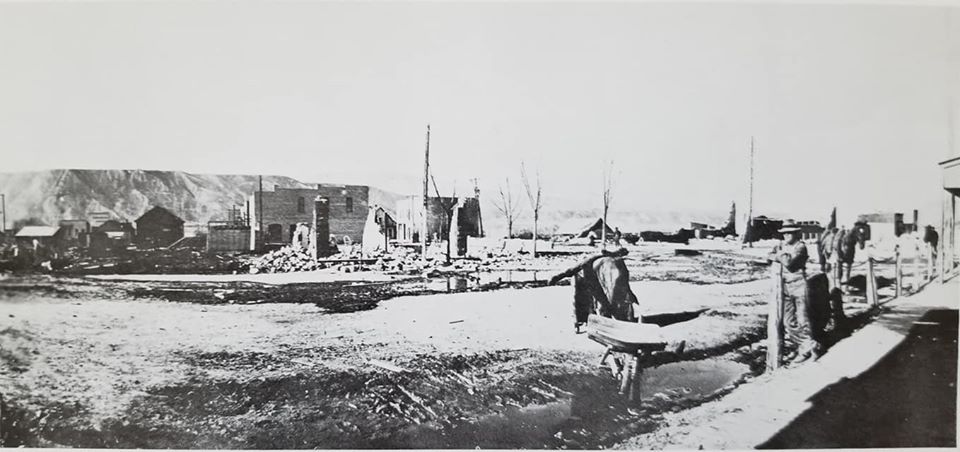
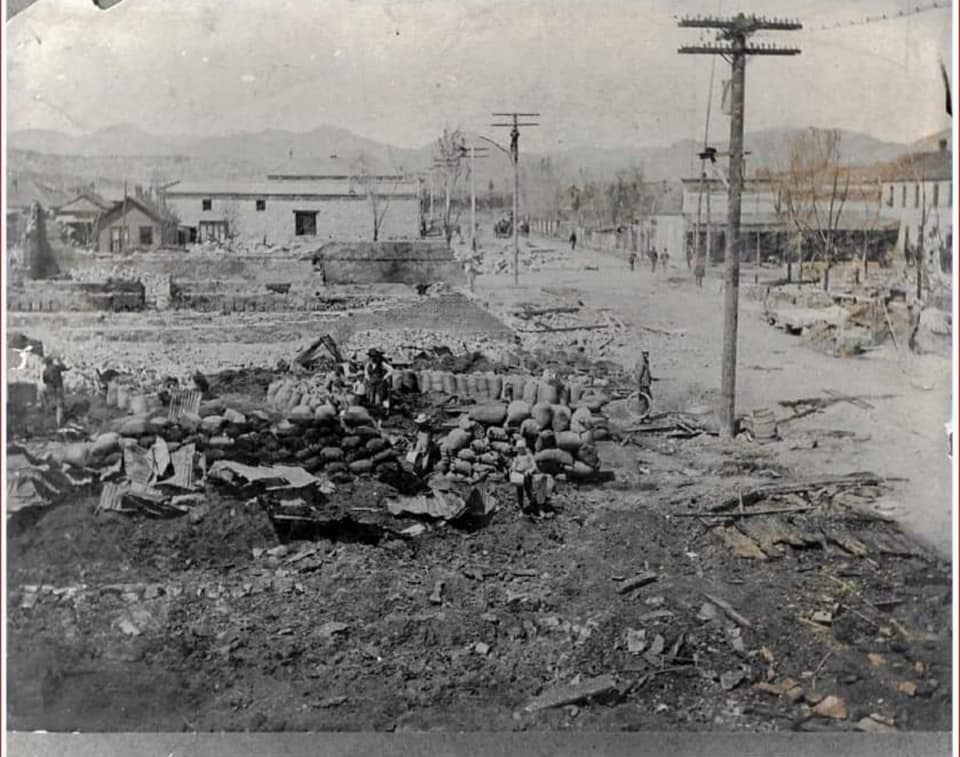

The Rifle House where the other photo was taken is center.
Clarks hotel still standing across the street. Buildings
lost were from Rifle house up to 3rd, and on the other side
of Railroad from Clarks to 3rd. Then a few on south side of
3rd both east and west. But 3rd was not the center of the
town at the time. 2nd street, then named Main Street, was
the commercial center. Nothing damaged on north side of 3rd
street. Not nearly as devastating as some accounts make of
it. 1st street at the time was named Front Street.
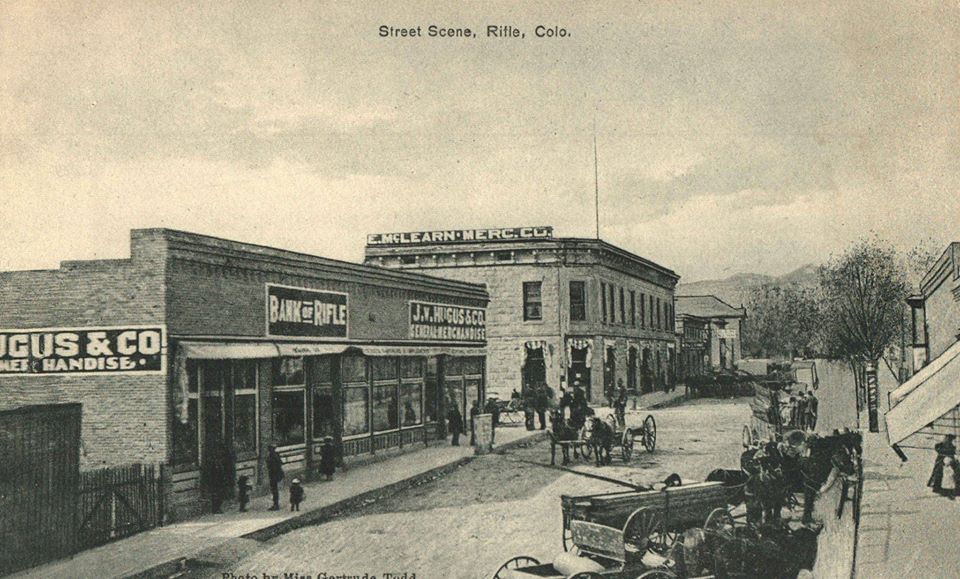
Railroad avenue after the re-build which happened quickly.
McLearn building was immediately built. But nothing on north
side of 3rd was damaged.
Some history of J.W. Hugus
 J W Hugus J W Hugus


This was the original location- Today it is known as The Country Attic (Below)
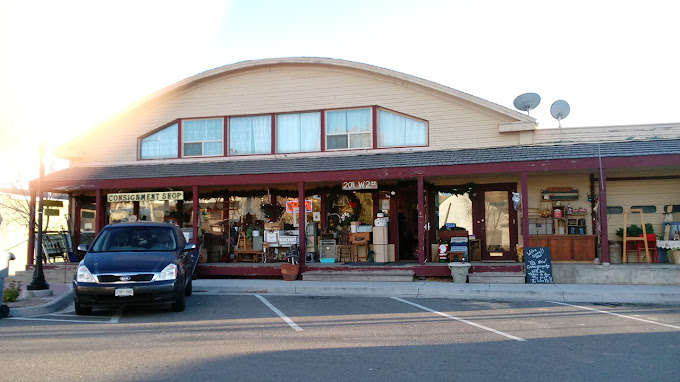
In 1901 Hugus Mercantile moved to 3rd and Railroad


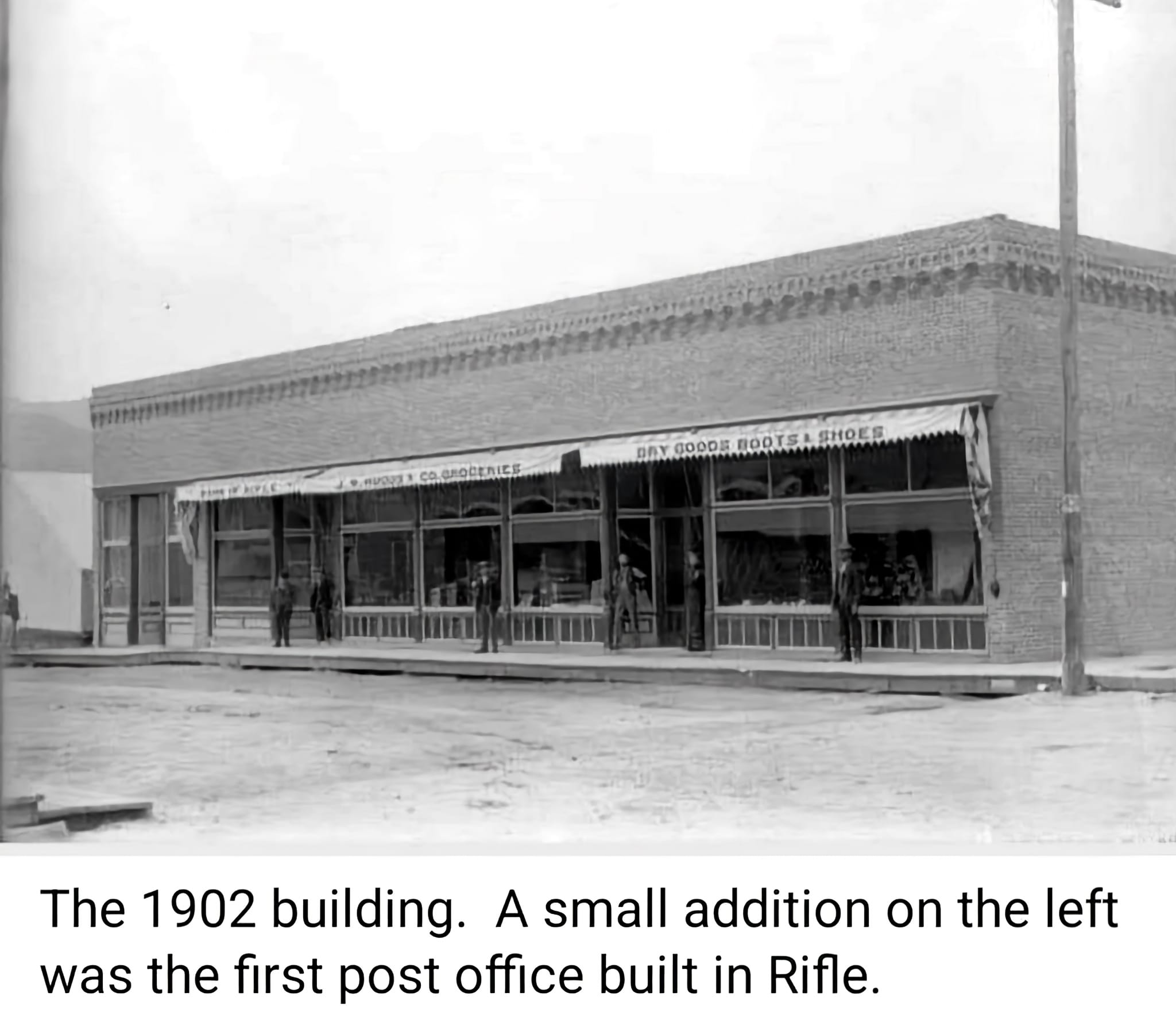
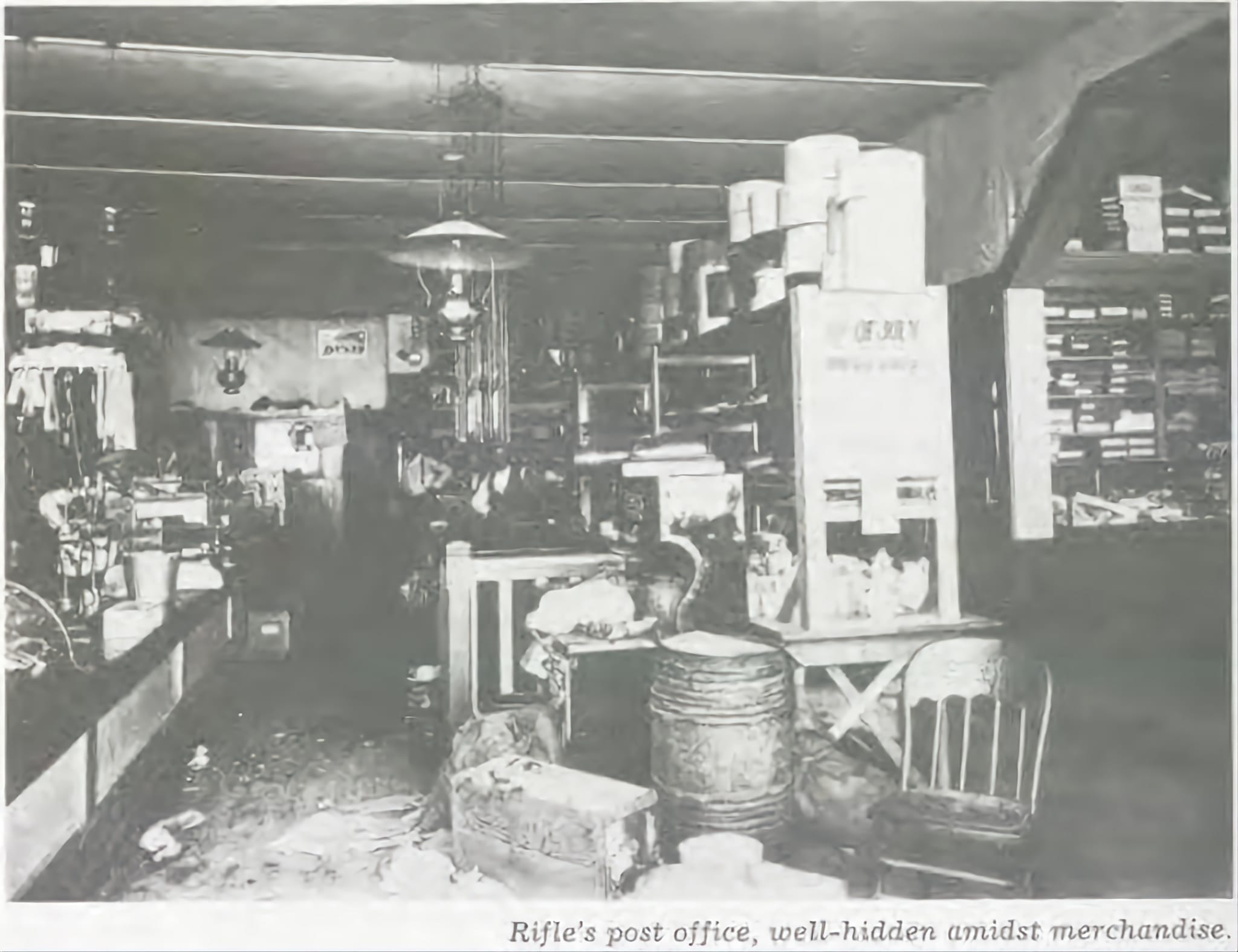
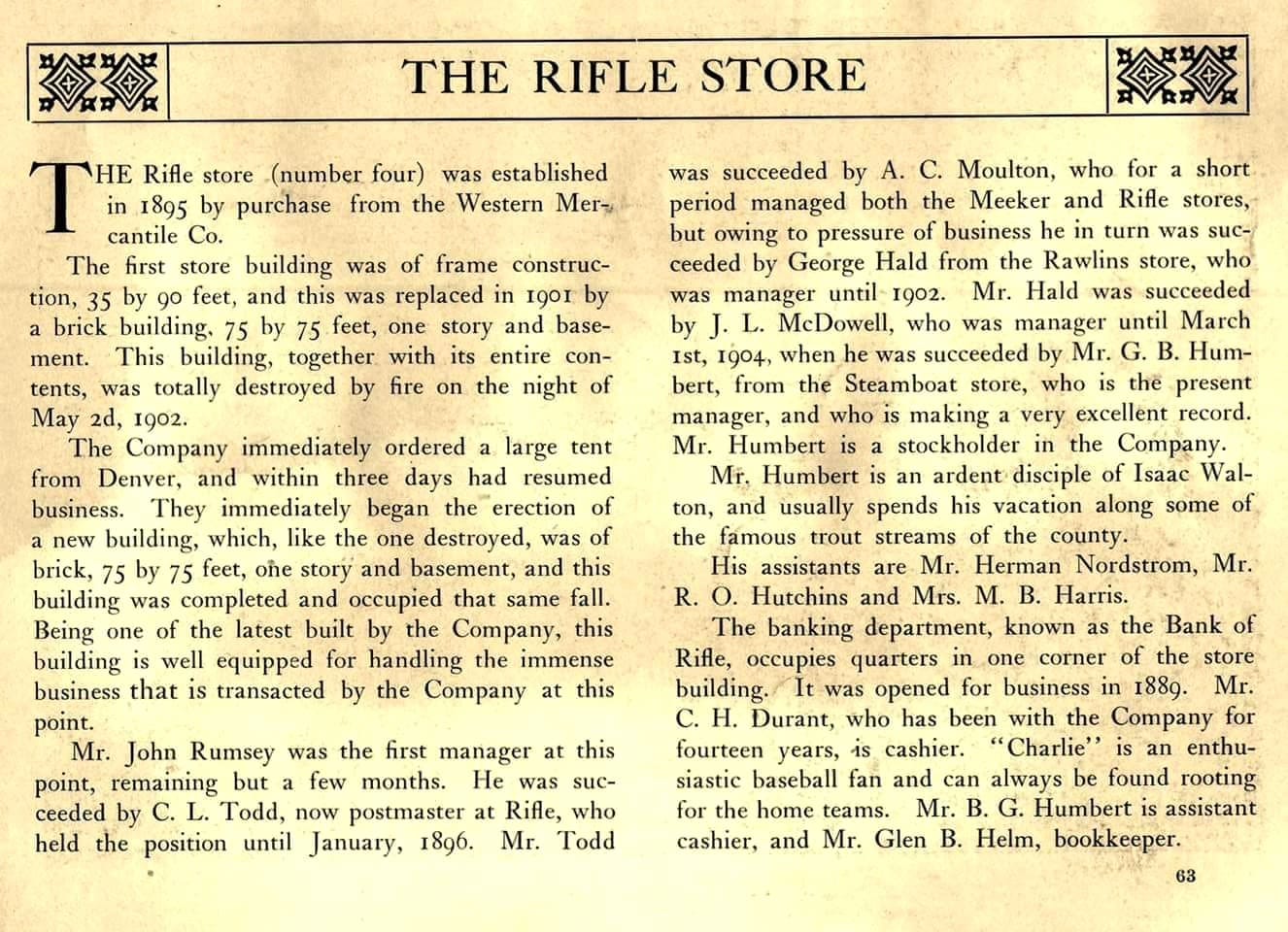



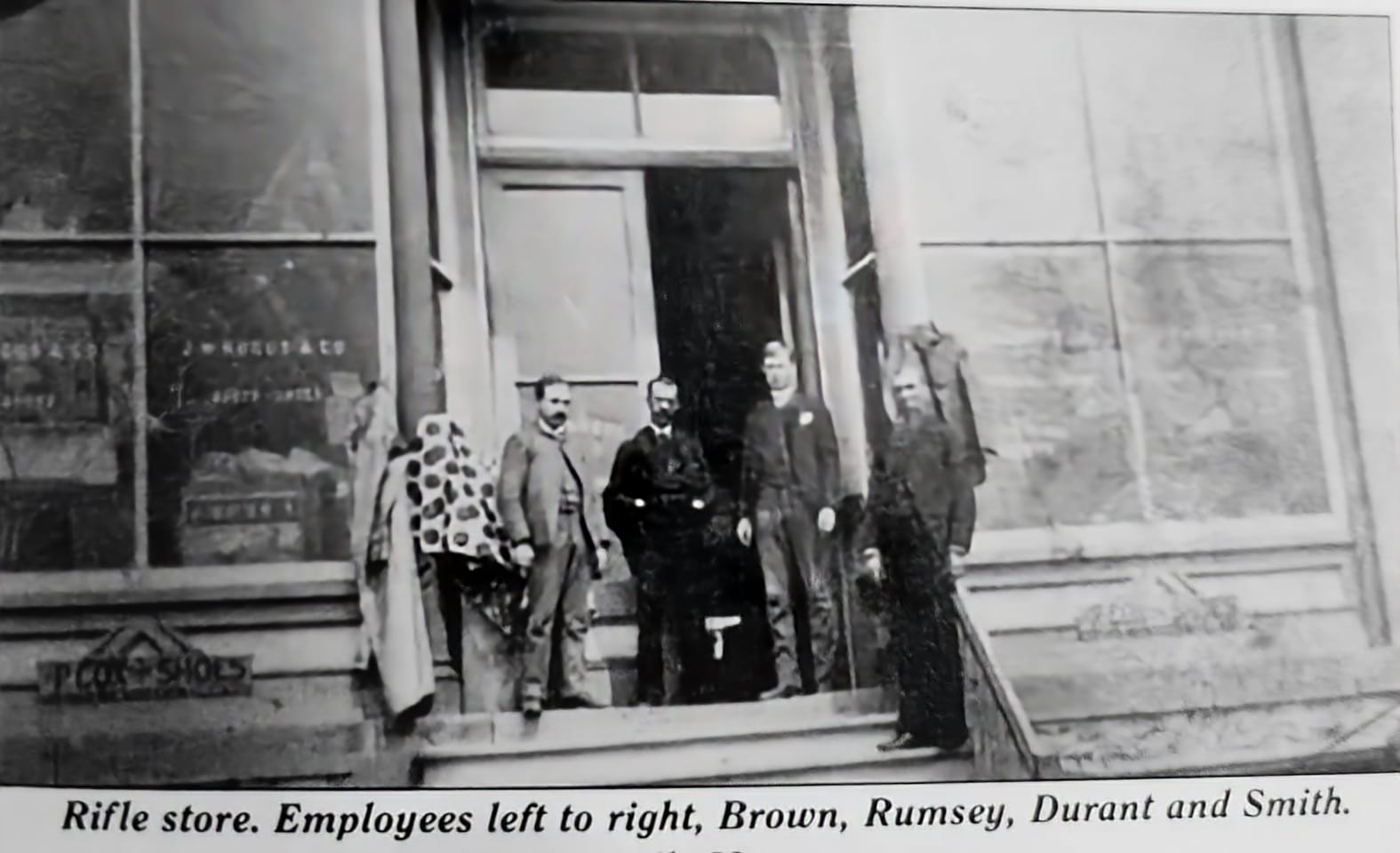
Rifle Store Employees Left to Right: Brown, Rumsey, Durant and Smith
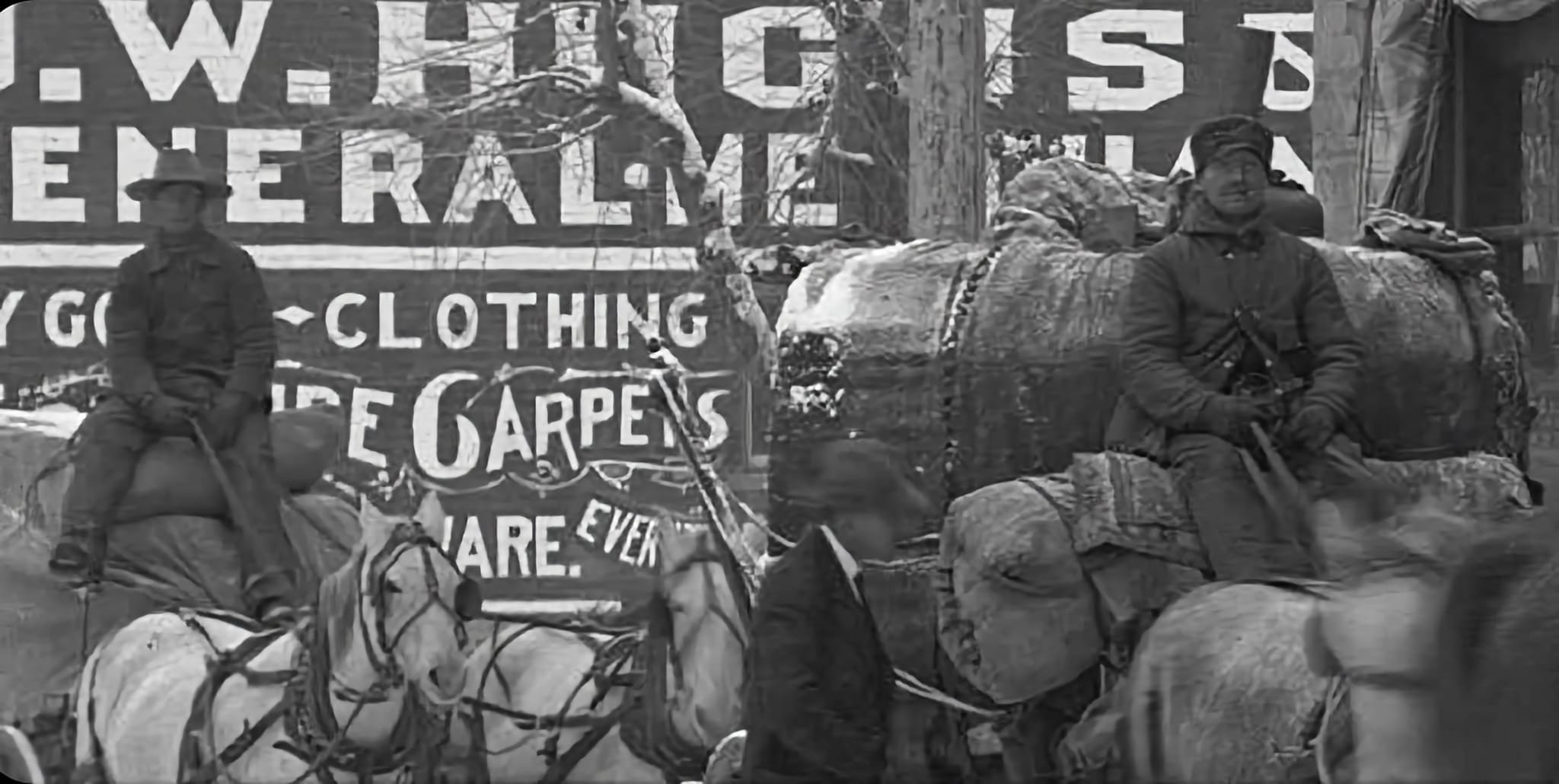
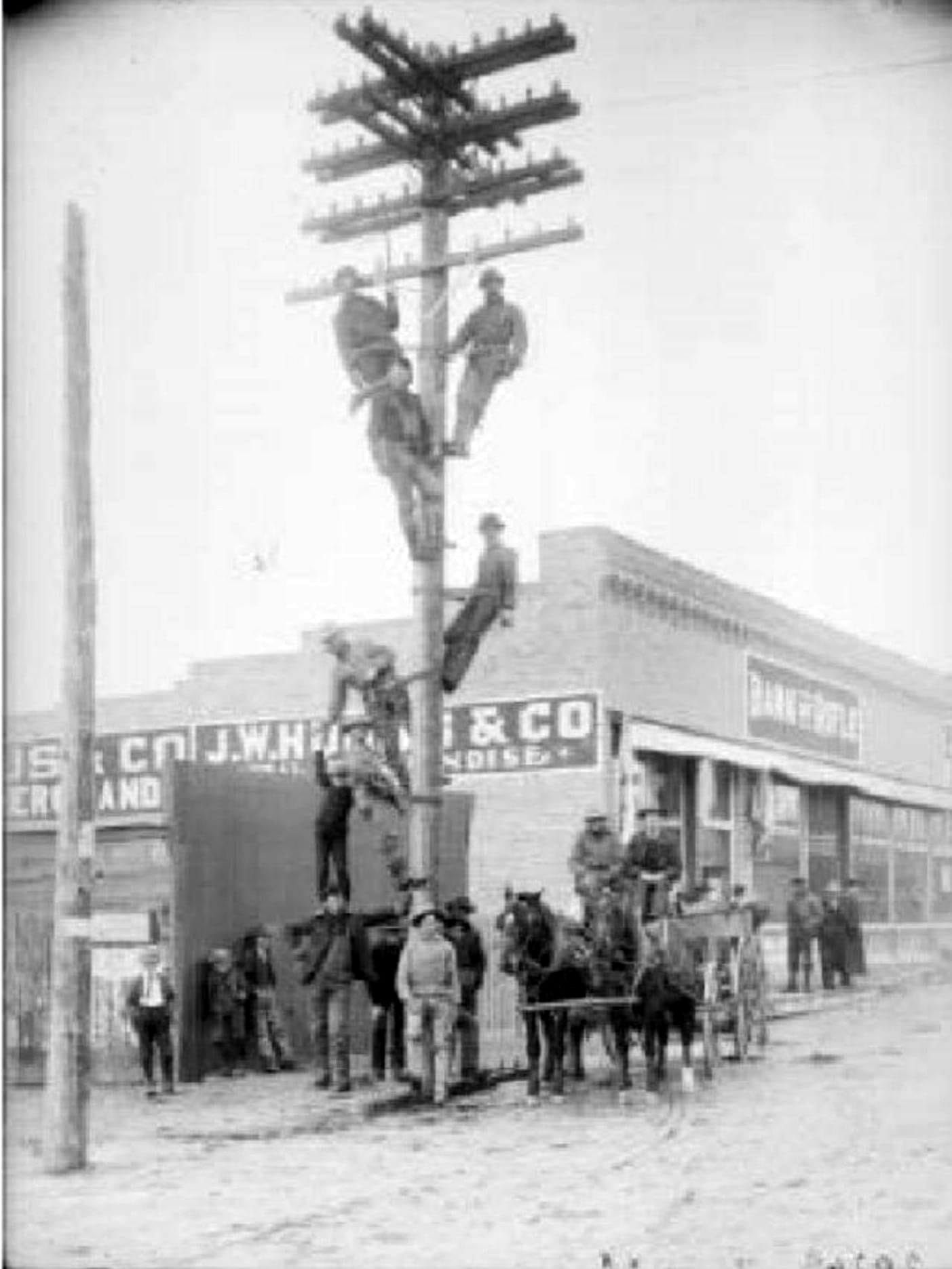
Bringing electricity to Rifle!
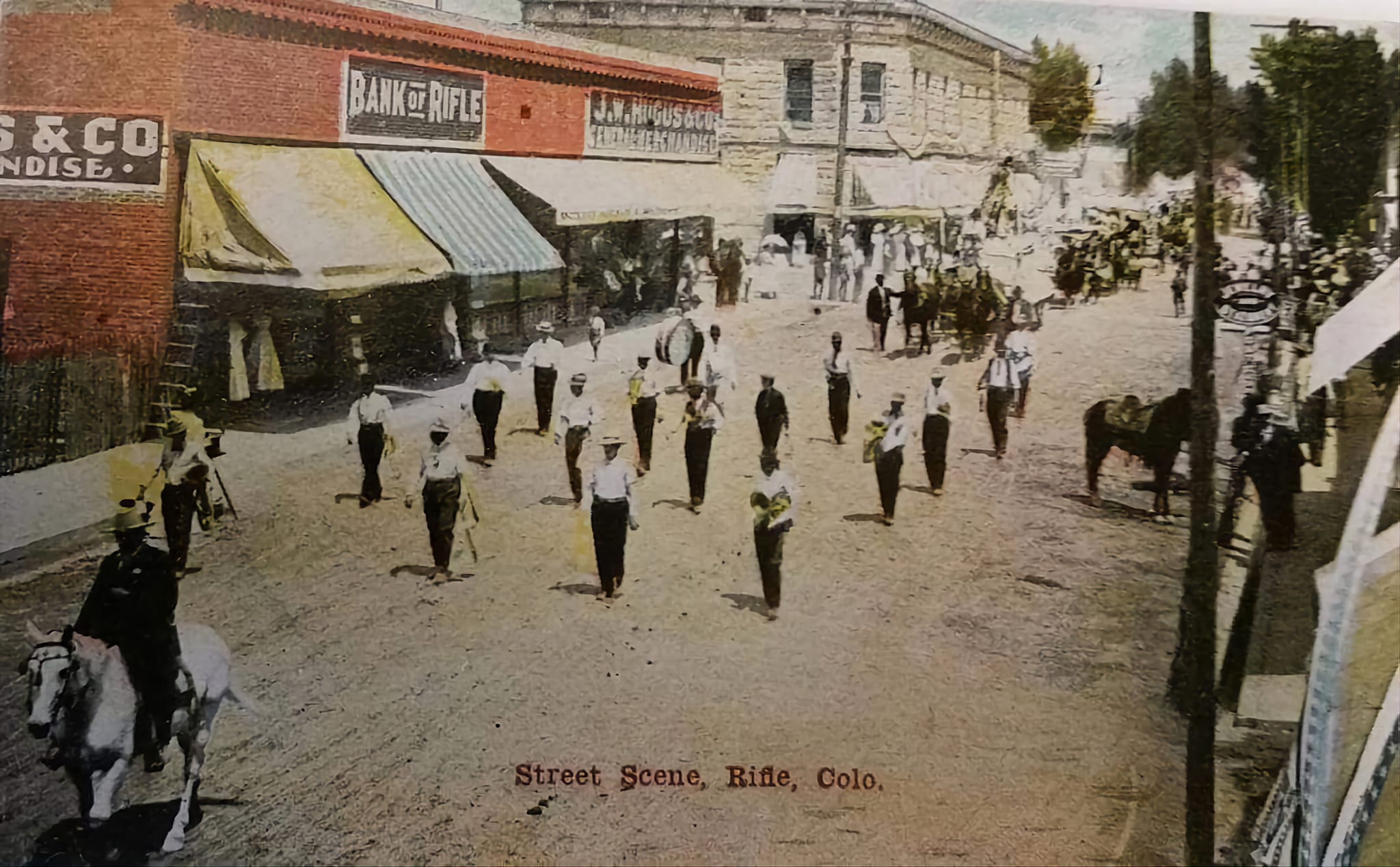
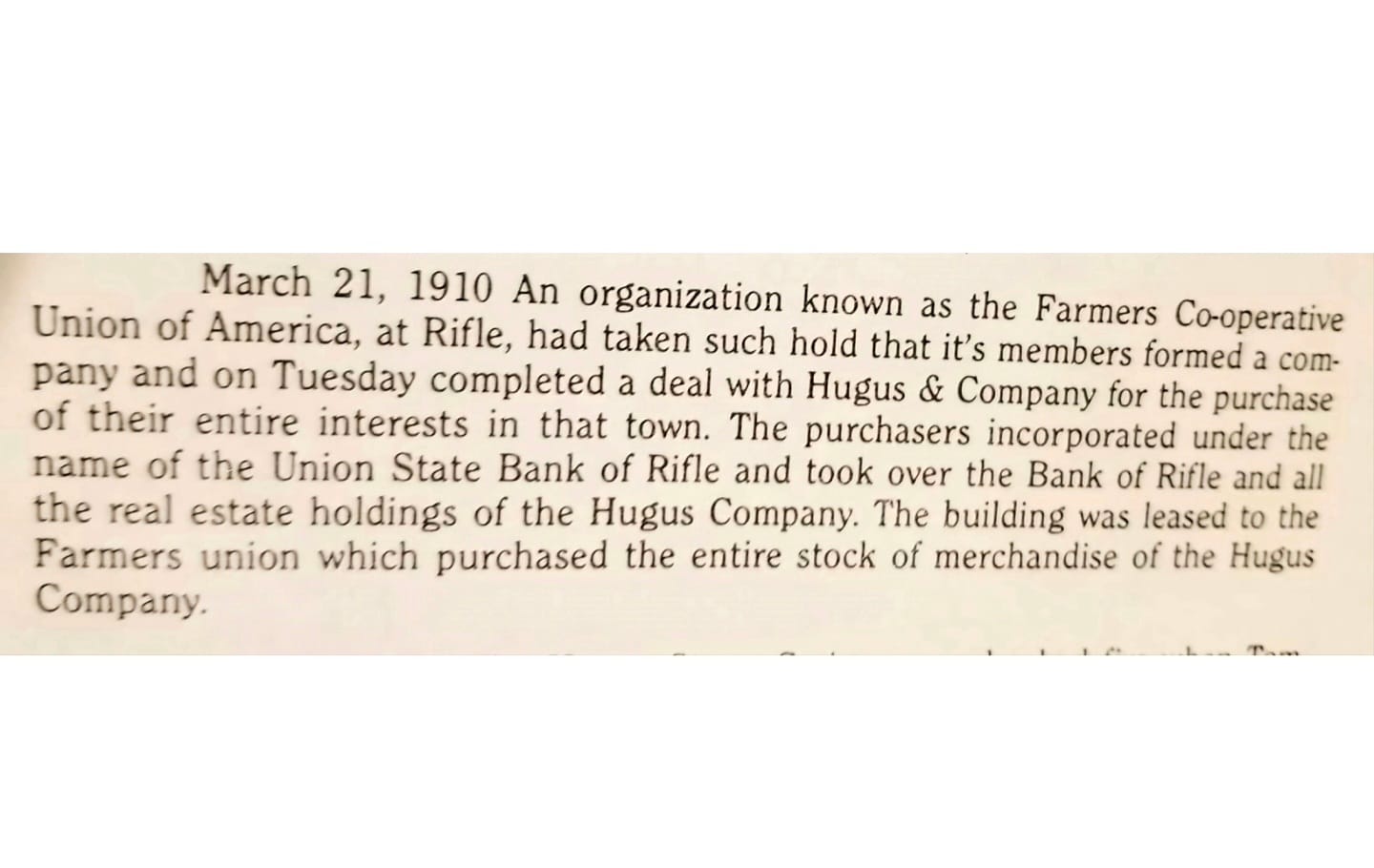
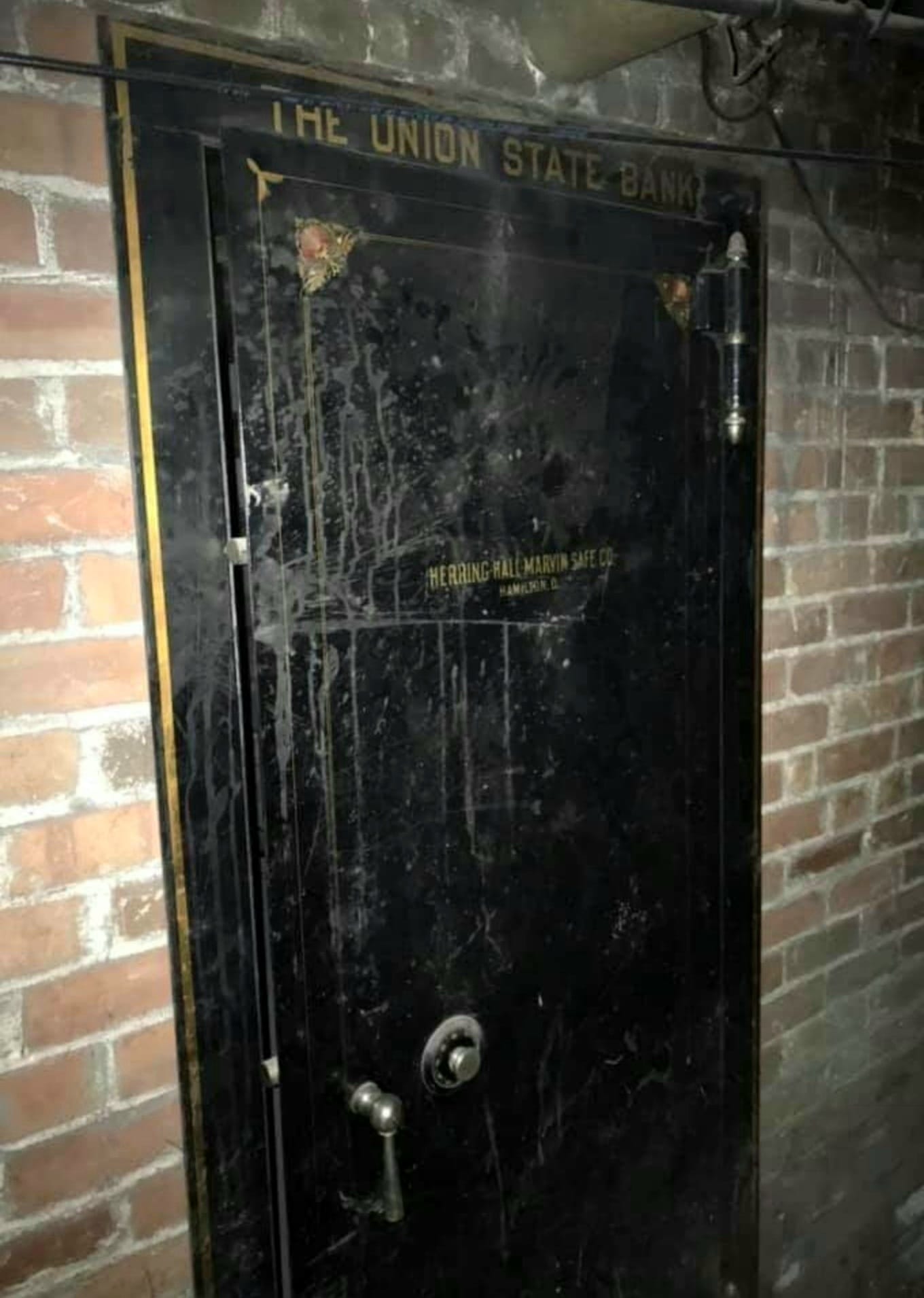
Modern Day is Whitt Clothing
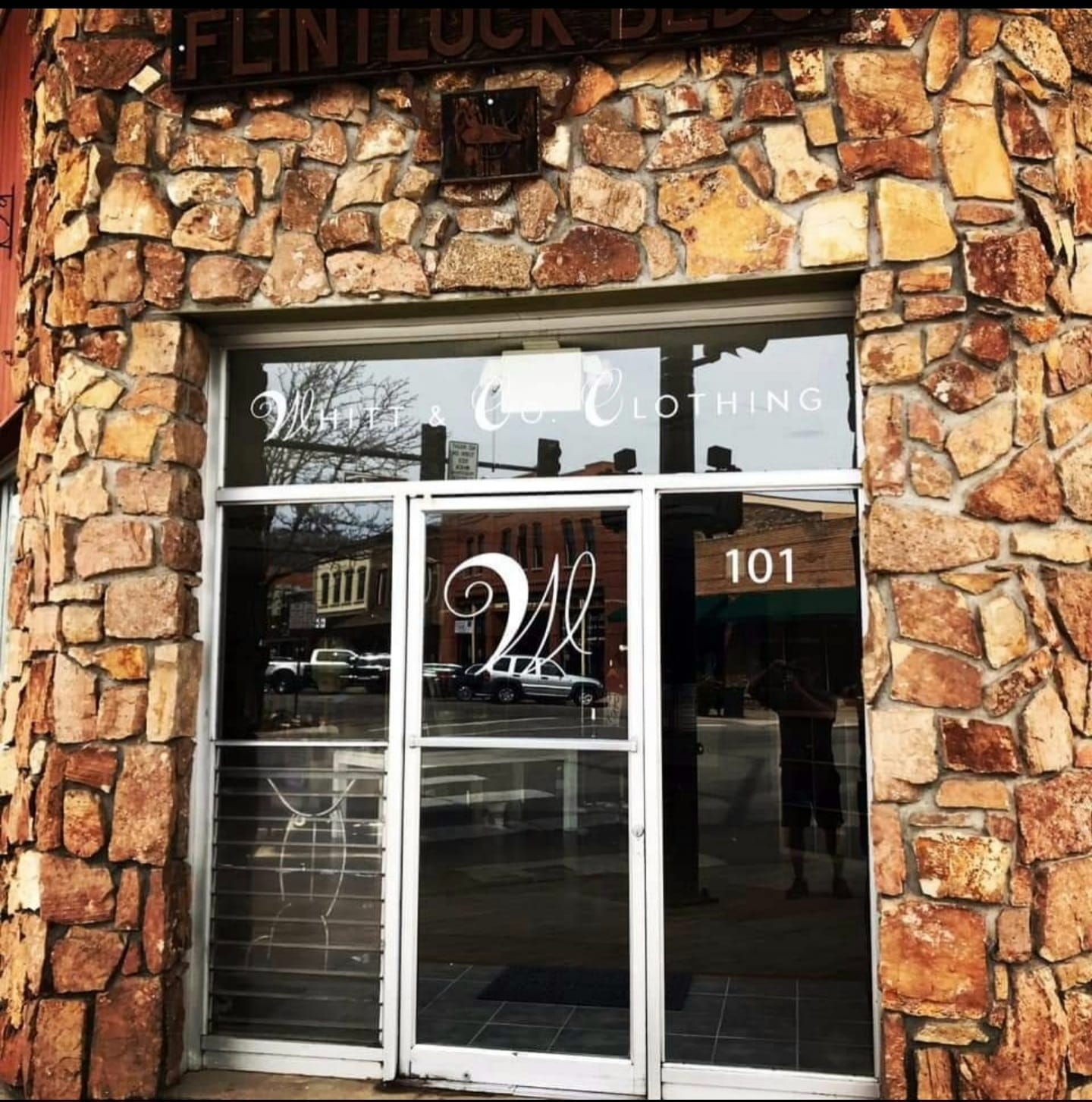


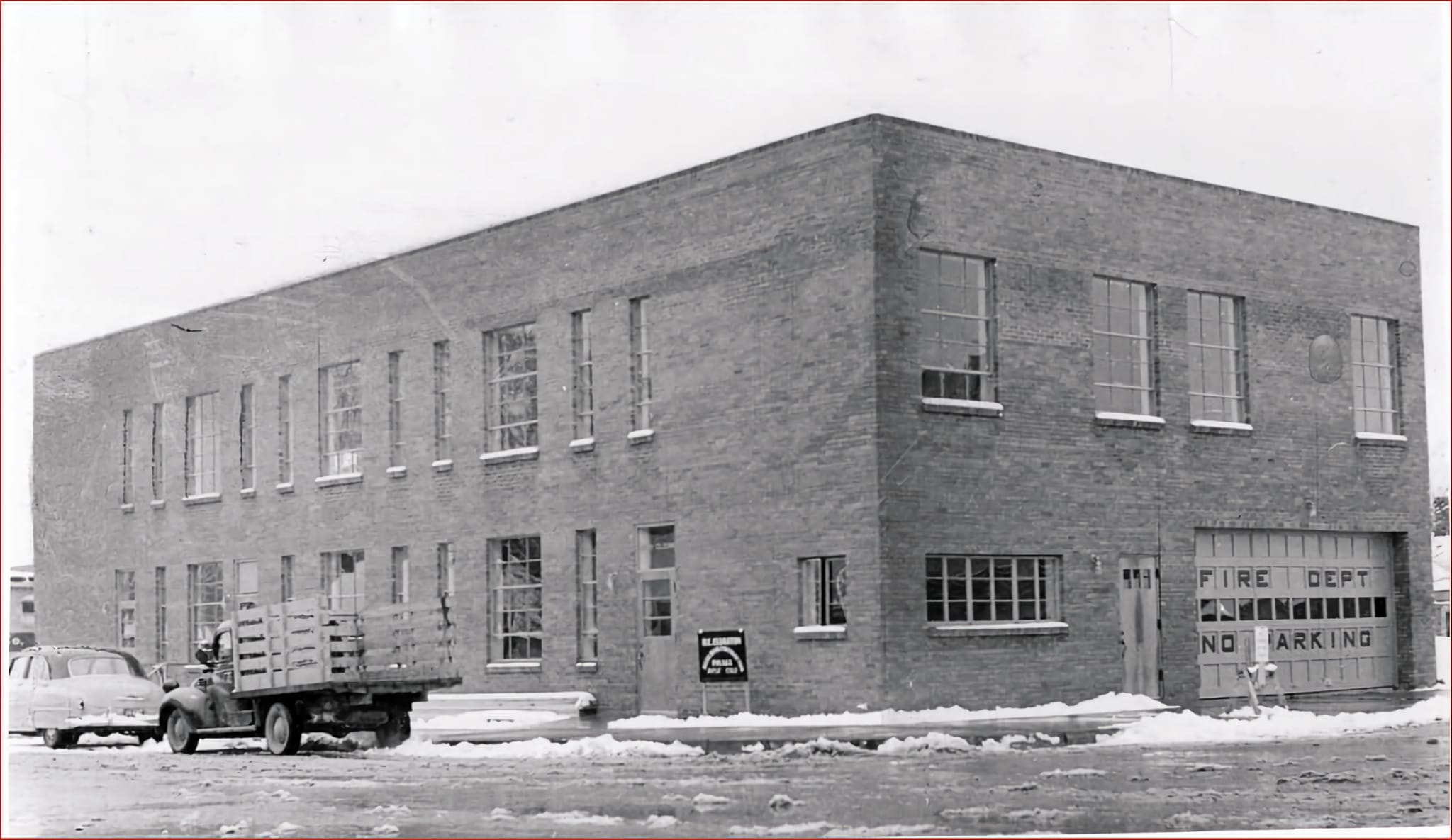
The basement was built in the 1930's by the Civilian Conservation Corp., the
rest of the building added in 1954 as the brass plaque inside states.
|